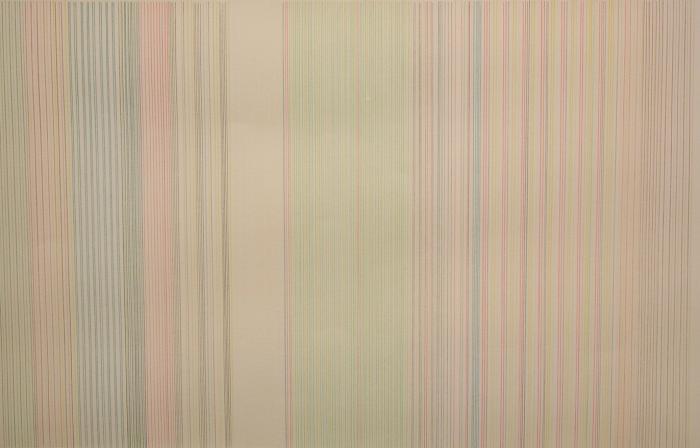[A minimalistic and abstract colored print. The background is a tan color. There are several thin, vertical lines within the piece that are colored in tones of green, red, yellow, blue, and purple. These lines vary in their distance from each other as well as their frequency within sections of the piece.]
Gene Davis
Albatross , 1973
Artwork Type: Prints
Medium: Lithograph on paper
Dimensions: 28 x 40 in. (72.39 x 101.6 cm)
Accession #: 19740250
Department: 1973 Selection Committee
Credit: Collection of University Art Museum, University at Albany, State University of New York on behalf of The University at Albany Foundation, purchase of University at Albany, State University of New York
Related Exhibition:
When We Were Young: Rethinking Abstraction From The University At Albany Art Collections (1967-Present)
Copyright: © Gene Davis
Object Label:
Show Object Label(s)Along with his fellow Washington Color Painters in the U.S. capital in the late 1950s through
the 1960s, Gene Davis was committed to hard-edge geometric form, pattern, and what critic
Clement Greenberg called a “post-painterly” absence of mark-making. Throughout his
oeuvre, Davis explored the possibilities of the repeated vertical stripe. In this lithograph,
Davis’s calculated use of color harmonies—analogous colors close to one another on the
color wheel (e.g., blue and green), opposite or complementary colors, and even
monochrome passages of blue or yellow—recalls Albers’s experimentation in his Homage to
the Square series. Each section of Albatross has its own meter or rhyme to it. Densely
packed lines suggest quick movement, whereas open spaces create musical rests or beats.
The sections can be read as stanzas, as in Samuel Taylor Coleridge’s poem Rime of the
Ancient Mariner (1798), to which Davis’s title seems to allude.
–When We Were Young: Rethinking Abstraction From The University At Albany Art Collections (1967-Present)
Please contact us at dabbatiello@albany.edu to verify collection holdings and artwork information. If you are interested in receiving a high resolution image of an artwork for educational, scholarly, or publication purposes, please contact us at dabbatiello@albany.edu.
